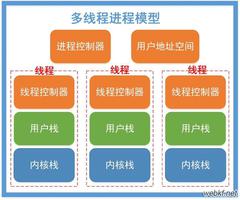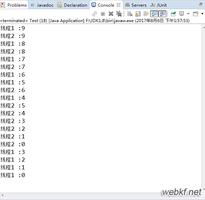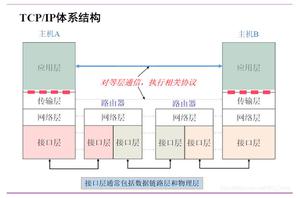多线程进阶——JUC并发编程之前夜

文档地址:https://docs.oracle.com/javase/8/docs/api/
首先我们看看什么是JUC
其次我们看看JUC都有哪些东西
于是我们可以总结下JUC可以分为五大类
1、同步工具类
2、lock类
3、原子类
4、集合相关类
5、Executor框架相关类
2、JUC入门前言——唠嗑 线程和进程
线程、进程,如果不能使用一句话说出来,说明技术不扎实!
进程:一个程序,QQ.exe Music.exe 程序的集合;
一个进程往往可以包含多个线程,至少包含一个!
Java默认有几个线程? 2 个 mian、GC
线程:开了一个进程 Typora,写字,自动保存(线程负责的) 对于Java而言:Thread、Runnable、Callable
Java 真的可以开启线程吗? 开不了,我们看看源码
public synchronized void start() { /**
* This method is not invoked for the main method thread or "system"
* group threads created/set up by the VM. Any new functionality added
* to this method in the future may have to also be added to the VM.
*
* A zero status value corresponds to state "NEW".
*/
if (threadStatus != 0)
throw new IllegalThreadStateException();
/* Notify the group that this thread is about to be started
* so that it can be added to the group"s list of threads
* and the group"s unstarted count can be decremented. */
group.add(this);
boolean started = false;
try {
start0();
started = true;
} finally {
try {
if (!started) {
group.threadStartFailed(this);
}
} catch (Throwable ignore) {
/* do nothing. If start0 threw a Throwable then
it will be passed up the call stack */
}
}
}
//本地方法,底层C++,java 无是无法直接操作硬件的
private native void start0();
并发、并行
并发编程:并发、并行
并发(多线程操作同一个资源)
CPU 一核 ,模拟出来多条线程,天下武功,唯快不破,快速交替
并行(多个人一起行走)
CPU 多核 ,多个线程可以同时执行; 线程池
public class Test1 { public static void main(String[] args) {
// 获取cpu的核数
// CPU 密集型,IO密集型
System.out.println(Runtime.getRuntime().availableProcessors());
}
}
并发编程的本质:充分利用CPU的资源
所有的公司都很看重!
企业,挣钱=> 提高效率,裁员,找一个厉害的人顶替三个不怎么样的人;
人员(减) 、技术成本(高)
线程有几个状态
public enum State { //新建
NEW,
/运行
RUNNABLE,
//阻塞
BLOCKED,
//等待
WAITING,
//超时等待
TIMED_WAITING,
//终止
TERMINATED;
}
wait/sleep区别
1、来自不同的类 wait => Object
sleep => Thread
2、关于锁的释放 wait 会释放锁,sleep 睡觉了,抱着锁睡觉,不会释放!
3、使用的范围是不同: wait必须在同步代码块中,sleep可以在任何地方睡
3、Lock锁(重点)
传统Synchronized
/** * 真正的多线程开发,公司中的开发,降低耦合性
* 线程就是一个单独的资源类,没有任何附属的操作!
* 1、 属性、方法
*/
public class SaleTicketDemo01 {
public static void main(String[] args) {
// 并发:多线程操作同一个资源类, 把资源类丢入线程
Ticket ticket = new Ticket();
// @FunctionalInterface 函数式接口,jdk1.8 lambda表达式 (参数)->{ 代码 }
new Thread(()->{
for (int i = 1; i < 40 ; i++) {
ticket.sale();
}
},"A").start();
new Thread(()->{
for (int i = 1; i < 40 ; i++) {
ticket.sale();
}
},"B").start();
new Thread(()->{
for (int i = 1; i < 40 ; i++) {
ticket.sale();
}
},"C").start();
}
}
// 资源类 OOP
class Ticket {
// 属性、方法
private int number = 30;
// 卖票的方式
// synchronized 本质: 队列,锁
public synchronized void sale(){
if (number>0){
System.out.println(Thread.currentThread().getName()+"卖出了"+(number--)+"票,剩余:"+number);
}
}
}
Lock接口
实现类:可重入锁、读锁、写锁
public ReentrantLock() { sync = new NonfairSync();//非公平锁(默认)
}
/**
* Creates an instance of {@code ReentrantLock} with the
* given fairness policy.
*
* @param fair {@code true} if this lock should use a fair ordering policy
*/
public ReentrantLock(boolean fair) {//公平锁
sync = fair ? new FairSync() : new NonfairSync();
}
公平锁:十分公平:可以先来后到
非公平锁:十分不公平:可以插队 (默认)
案例代码:
public class SaleTicketDemo02 { public static void main(String[] args) {
// 并发:多线程操作同一个资源类, 把资源类丢入线程
Ticket2 ticket = new Ticket2();
// @FunctionalInterface 函数式接口,jdk1.8 lambda表达式 (参数)->{ 代码 }
new Thread(()->{for (int i = 1; i < 40 ; i++) ticket.sale();},"A").start();
new Thread(()->{for (int i = 1; i < 40 ; i++) ticket.sale();},"B").start();
new Thread(()->{for (int i = 1; i < 40 ; i++) ticket.sale();},"C").start();
}
}
// Lock三部曲
// 1、 new ReentrantLock();
// 2、 lock.lock(); // 加锁
// 3、 finally=> lock.unlock(); // 解锁
class Ticket2 {
// 属性、方法
private int number = 30;
Lock lock = new ReentrantLock();
public void sale(){
lock.lock(); // 加锁
try {
// 业务代码
if (number>0){
System.out.println(Thread.currentThread().getName()+"卖出了"+(number--)+"票,剩余:"+number);
}
} catch (Exception e) {
e.printStackTrace();
} finally {
lock.unlock(); // 解锁
}
}
}
Synchronized 和 Lock 区别
1、Synchronized 内置的Java关键字, Lock 是一个Java类
2、Synchronized 无法判断获取锁的状态,Lock 可以判断是否获取到了锁
3、Synchronized 会自动释放锁,lock 必须要手动释放锁!如果不释放锁,死锁
4、Synchronized 线程 1(获得锁,阻塞)、线程2(等待,傻傻的等);Lock锁就不一定会等待下 去;
5、Synchronized 可重入锁,不可以中断的,非公平;Lock ,可重入锁,可以 判断锁,非公平(可以 自己设置);
6、Synchronized 适合锁少量的代码同步问题,Lock 适合锁大量的同步代码!
锁是什么呢,如何判断锁是谁?
4、生产者和消费者问题
面试的:单例模式、排序算法、生产者和消费者、死锁
生产者和消费者问题 Synchronized 版
/** * 线程之间的通信问题:生产者和消费者问题! 等待唤醒,通知唤醒
* 线程交替执行 A B 操作同一个变量 num = 0
* A num+1
* B num-1
*/
public class A {
public static void main(String[] args) {
Data data = new Data();
new Thread(()->{
for (int i = 0; i < 10; i++) {
try {
data.increment();
} catch (InterruptedException e) {
e.printStackTrace();
}
}
},"A").start();
new Thread(()->{
for (int i = 0; i < 10; i++) {
try {
data.decrement();
} catch (InterruptedException e) {
e.printStackTrace();
}
}
},"B").start();
new Thread(()->{
for (int i = 0; i < 10; i++) {
try {
data.increment();
} catch (InterruptedException e) {
e.printStackTrace();
}
}
},"C").start();
new Thread(()->{
for (int i = 0; i < 10; i++) {
try {
data.decrement();
} catch (InterruptedException e) {
e.printStackTrace();
}
}
},"D").start();
}
}
// 判断等待,业务,通知
class Data{ // 数字 资源类
private int number = 0;
//+1
public synchronized void increment() throws InterruptedException {
if (number!=0){ //0
// 等待
this.wait();
}
number++;
System.out.println(Thread.currentThread().getName()+"=>"+number);
// 通知其他线程,我+1完毕了
this.notifyAll();
}
//-1
public synchronized void decrement() throws InterruptedException {
if (number==0){ // 1
// 等待
this.wait();
}
number--;
System.out.println(Thread.currentThread().getName()+"=>"+number);
// 通知其他线程,我-1完毕了
this.notifyAll();
}
}
问题存在,A B C D 4 个线程! 虚假唤醒,注意要把 if 判断改为 while ,因为 if 只会判断一次!
JUC版的生产者和消费者问题
通过Lock找到Condition
代码实现:
public class B { public static void main(String[] args) {
Data2 data = new Data2();
new Thread(()->{
for (int i = 0; i < 10; i++) {
try {
data.increment();
} catch (InterruptedException e) {
e.printStackTrace();
}
}
},"A").start();
new Thread(()->{
for (int i = 0; i < 10; i++) {
try {
data.decrement();
} catch (InterruptedException e) {
e.printStackTrace();
}
}
},"B").start();
new Thread(()->{
for (int i = 0; i < 10; i++) {
try {
data.increment();
} catch (InterruptedException e) {
e.printStackTrace();
}
}
},"C").start();
new Thread(()->{
for (int i = 0; i < 10; i++) {
try {
data.decrement();
} catch (InterruptedException e) {
e.printStackTrace();
}
}
},"D").start();
}
}
// 判断等待,业务,通知
class Data2{ // 数字 资源类
private int number = 0;
Lock lock = new ReentrantLock();
Condition condition = lock.newCondition();
//condition.await(); // 等待
//condition.signalAll(); // 唤醒全部
//+1
public void increment() throws InterruptedException {
lock.lock();
try {
// 业务代码
while (number!=0){ //0
// 等待
condition.await();
}
number++;
System.out.println(Thread.currentThread().getName()+"=>"+number);
// 通知其他线程,我+1完毕了
condition.signalAll();
} catch (Exception e) {
e.printStackTrace();
} finally {
lock.unlock();
}
}
//-1
public synchronized void decrement() throws InterruptedException {
lock.lock();
try {
while (number==0){ // 1
// 等待
condition.await();
}
number--;
System.out.println(Thread.currentThread().getName()+"=>"+number);
// 通知其他线程,我-1完毕了
condition.signalAll();
} catch (Exception e) {
e.printStackTrace();
} finally {
lock.unlock();
}
}
}
任何一个新的技术,绝对不是仅仅只是覆盖了原来的技术,优势和补充!
Condition 精准的通知和唤醒线程
/** * A 执行完调用B,B执行完调用C,C执行完调用A
*/
public class C {
public static void main(String[] args) {
Data3 data = new Data3();
new Thread(()->{
for (int i = 0; i <10 ; i++) {
data.printA();
}
},"A").start();
new Thread(()->{
for (int i = 0; i <10 ; i++) {
data.printB();
}
},"B").start();
new Thread(()->{
for (int i = 0; i <10 ; i++) {
data.printC();
}
},"C").start();
}
}
class Data3{ // 资源类 Lock
private Lock lock = new ReentrantLock();
private Condition condition1 = lock.newCondition();
private Condition condition2 = lock.newCondition();
private Condition condition3 = lock.newCondition();
private int number = 1; // 1A 2B 3C
public void printA(){
lock.lock();
try {
// 业务,判断-> 执行-> 通知
while (number!=1){
// 等待
condition1.await();
}
System.out.println(Thread.currentThread().getName()+"=>AAAAAAA");
// 唤醒,唤醒指定的人,B
number = 2;
condition2.signal();
} catch (Exception e) {
e.printStackTrace();
} finally {
lock.unlock();
}
}
public void printB(){
lock.lock();
try {
// 业务,判断-> 执行-> 通知
while (number!=2){
condition2.await();
}
System.out.println(Thread.currentThread().getName()+"=>BBBBBBBBB");
// 唤醒,唤醒指定的人,c
number = 3;
condition3.signal();
} catch (Exception e) {
e.printStackTrace();
} finally {
lock.unlock();
}
}
public void printC(){
lock.lock();
try {
// 业务,判断-> 执行-> 通知
// 业务,判断-> 执行-> 通知
while (number!=3){
condition3.await();
}
System.out.println(Thread.currentThread().getName()+"=>BBBBBBBBB");
// 唤醒,唤醒指定的人,c
number = 1;
condition1.signal();
} catch (Exception e) {
e.printStackTrace();
} finally {
lock.unlock();
}
}
}
本文参考:狂神说java
https://www.bilibili.com/video/av90007319
以上是 多线程进阶——JUC并发编程之前夜 的全部内容, 来源链接: utcz.com/z/513804.html









